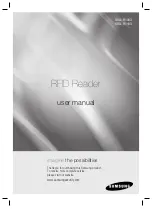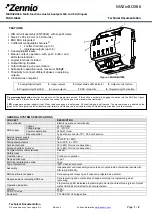
3.4. Installation
Before installation, make proper system design considerations to avoid unnecessary connections and to keep cable lengths as
short as possible. See also the
chapter.
1. Preferably mount the Smart BMS on a vertical surface for optimal cooling.
2. Determine the rating of Alternator/Starter Bat+ port fuse. The fuse doubles as a shunt, thus the Smart BMS will limit the input
current according to the rating of this fuse. For fuse and corresponding current limit please see the table below.
3. Choosing the right fuse will prevent overheating of the alternator and/or DC cabling.
4. Disconnect the cabling from the minus pole of the starter battery.
5. Pull off the remote on/off connector to prevent unwanted switching of the Smart BMS.
6. Install and connect fuses and all electrical wiring, leaving the negative poles of the lithium batteries and the starter battery
disconnected. Connect the starter battery positive to the Alternator/Starter Bat+ terminal and the lithium battery positive to the
Li-Ion+ terminal. Make sure the M8 nuts of the fuse are tight (
mounting torque: 10 NM)
.
7. Daisy chain the battery control cables between the lithium batteries and connect the ends to the BMS port. To extend the
communication cables between a Lithium Battery Smart and the BMS, use the
M8 circular connector Male/Female 3 pole
8. Connect the supplied GND cable to the negative of the lithium battery and the starter battery. Note that the supplied GND
cable
must
be protected accordingly. Depending on the application a fuse between 300mA and 1.3A is required. Use the
to determine the expected power consumption of the Smart BMS using Load and Charge disconnect
and the pre-alarm output. This value multiplied by 1.25 determines the value of the fuse to be used. Example: Current
consumption 16mA + Load disconnect output 10mA + Charge disconnect output 10mA + pre-alarm output 1A = 1036mA x
1.25 = 1.3A fuse rating.
9. Reinsert the remote on/off connector on the Smart BMS. It is mandatory to install either an on/off switch between L and H of
the remote on/off terminal or the wire loop (default) for correct operation.
10. The Smart BMS is now ready for use.
Fuse rating
Max alternator charge current
125A
100A
If the required alternator charge current is less than
40A, please use the supplied ATO fuse holder with an
appropriate ATO fuse pair according to the table.
100A
90A
80A
60A
60A
50A
2 x 30A
40A
2 x 20A
25A
2 x 15A
20A
2 x 10A
12A
2 x 7.5A
9A
Smart BMS 12-200
Page 7
Installation and configuration




































